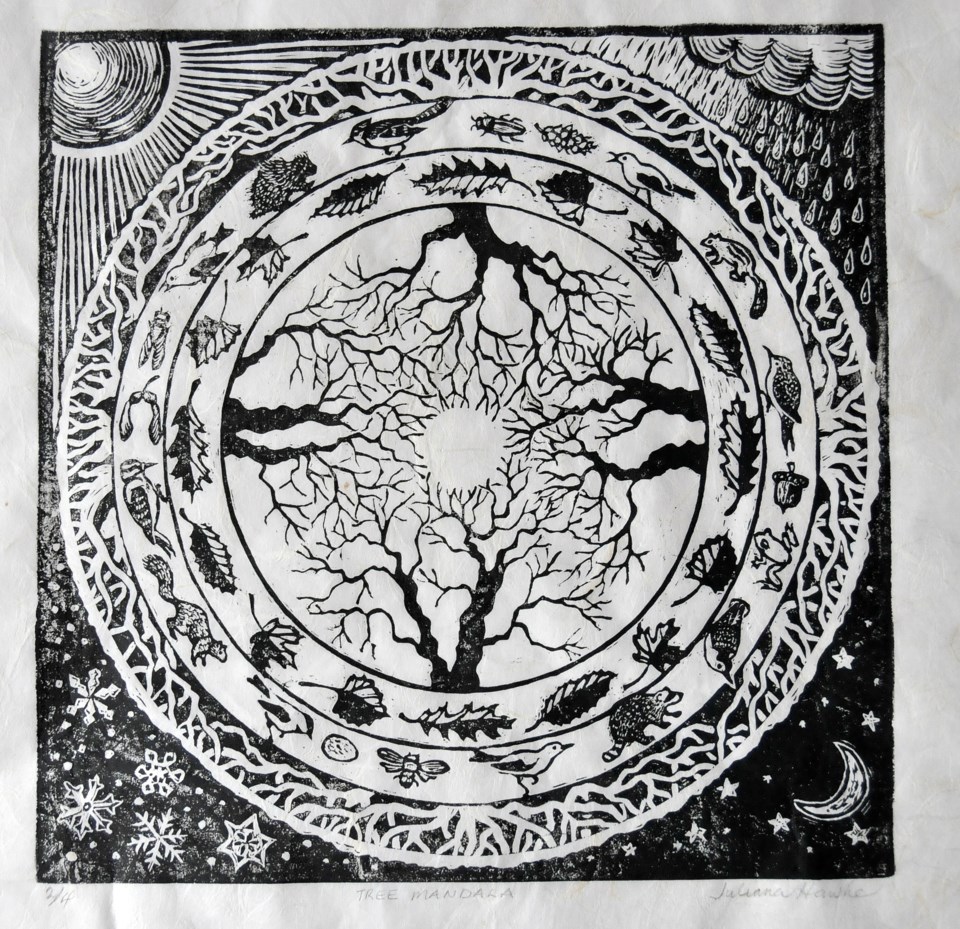As one studies the natural environment, trying to understand the inter-relationships of many species, the exercise can become a bit overwhelming. I say this as one who has had the privilege to work in and for our environment for several decades.
Concepts once considered simple and straightforward have become very complex.
"Back in the good old days," there was the explanation that conservation was the wise use of our natural resources.
We acknowledged that we used the trees, the fish, the game animals, the water, the air, the soil, and that we had better do so sparingly and with some care.
The next layer of understanding was that some of these natural resources were renewable (a replacement tree could be planted) and some were nonrenewable (once you dig up all the limestone there's no more to be had).
The understanding of food chains, food pyramids and habitat components helped us to think about ways to use conservation practices to save and protect favoured species.
Even earlier, in the 1940s, came whispers that maybe all these resources were not here just for humans to use, that maybe perhaps we were just a small part of a much bigger concept.
Thus writers like Aldo Leopold introduced us to a land ethic, that when one species is 'managed' (e.g. killing cougars or wolves to protect cattle) then many other species will be affected. Hey, who knew?
By the 1960s this idea morphed into the notion of ecology, the inter-relationships of all species. You probably recall hearing about the web of life: all strands are connected; pluck one strand and the whole web vibrates. Groovy stuff to wrap your head around.
All this started to become mainstream knowledge in the 1970s as the impact of acid rain and DDT chemical in the food chain began to show itself in everyday examples.
The populations of the mighty Peregrine falcon and the fish-eating osprey began a sharp nose-dive toward extinction; stone work in buildings began to crumble. And the cry went out, "Why isn't the government doing something about this?!"
Thus research of something other than a 'hook and bullet' species began, as gulls and migrating songbirds began to be examined with great closeness.
Also in the 1970s came a scientific paper by F. Schumacher who introduced us to "natural capital". What would it cost us to replace a tree and all the services it provides, such as oxygen production, carbon sequestering, wildlife food and shelter, homes for insects in the food chain, intrinsic values to humans, and more?
Trying to put a financial value on a tree was a way to catch the attention of politicians and decision-makers that a tree was worth way more than just how many picnic tables could be made from the harvested lumber.
Natural capital quickly became renamed as "environmental services" as discussions revealed that, yes indeed, we humans had benefits freely gained from the natural environment and its properly functioning ecosystems.
To artificially create such services quickly added up to billions of dollars that would need to be spent to maintain a quality of life. It became obvious (to some) that it was much more fiscally responsible to protect the environment than to destroy it for yet another strip mall.
And now we call this whole process of awareness "ecosystem services", which is divided into four areas of study: the provision of food, the regulating of climate and disease, the support of natural cycles, and the cultural and recreational use of the land.
Coupled with these heady concepts is the ability nowadays to analyze the very DNA of an individual, to see its relationship traits with other species of similar character.
This ability to look so close has created a new set of challenges, as the simple 'lumping and splitting' of species and their roles in the environment has become very blurred as to where one species ends and another truly stands alone.
As a land steward (and aren't we all) we are now challenged with not only making lists of what grows and lives in a certain parcel of land, but must also be aware of how they relate to one another, and how this particular parcel of land relates to other parcels both nearby and afar.
As one researcher states, "Ecology has moved from counting species to accounting for species."
For many years, our rally cry was "biodiversity"! If there are many species on a parcel of land than it must have greater ecological value than a nearby parcel with a shorter list. However, this notion of understanding the land has now been upset with terms like functional diversity and phylogenetic diversity. Have I lost you yet?
A great analogy is that of doing an inventory of an automobile.
A quick assessment shows four tires, one gas tank, six pieces of glass, a battery, and some other things yet to be identified. A closer look reveals a fifth wheel hidden inside, plus three seating objects (two similar near the front and the third larger near the rear, all interior).
After several such surveys we would have a lengthy list of what makes up a car, but would not have any idea as to how it works nor which pieces are critical to its functioning. Would it still work if the rear seat was removed? Would it still work if just the battery was removed? Would it still work if one of the five tires were removed?
So that's how we are now looking at our natural environment. We have lovely long lists of its parts but no full understanding yet of how all those parts come together to make a functioning, whole, ecosystem.
Just as that conglomerate of metal, plastic, and glass needs a wee small thing called a key to make it work, perhaps our ecosystems also contain a currently insignificant species that, if removed, would cause the whole glorious system to collapse.
Oh, the things to think about on a cold winter's day.
